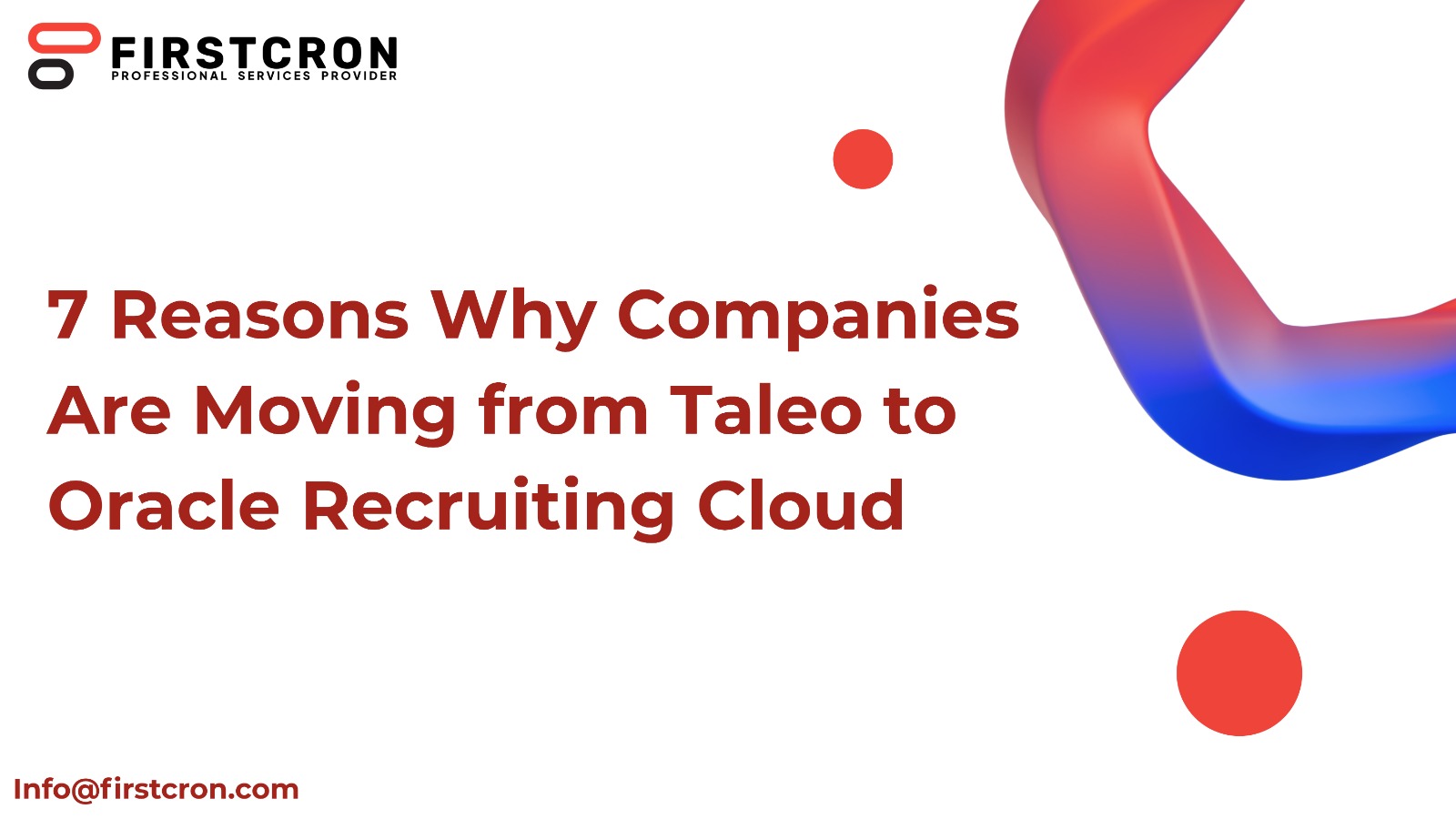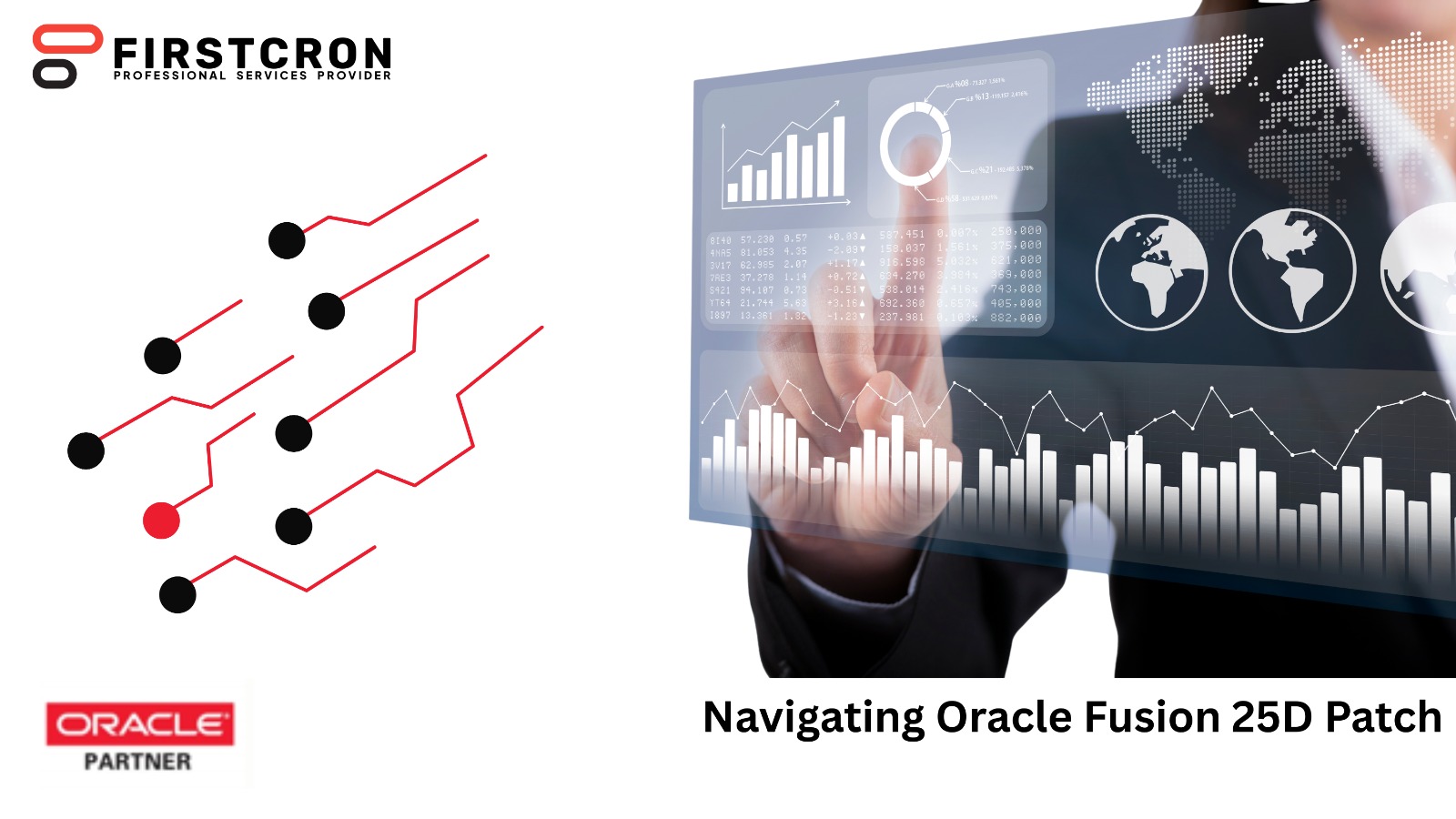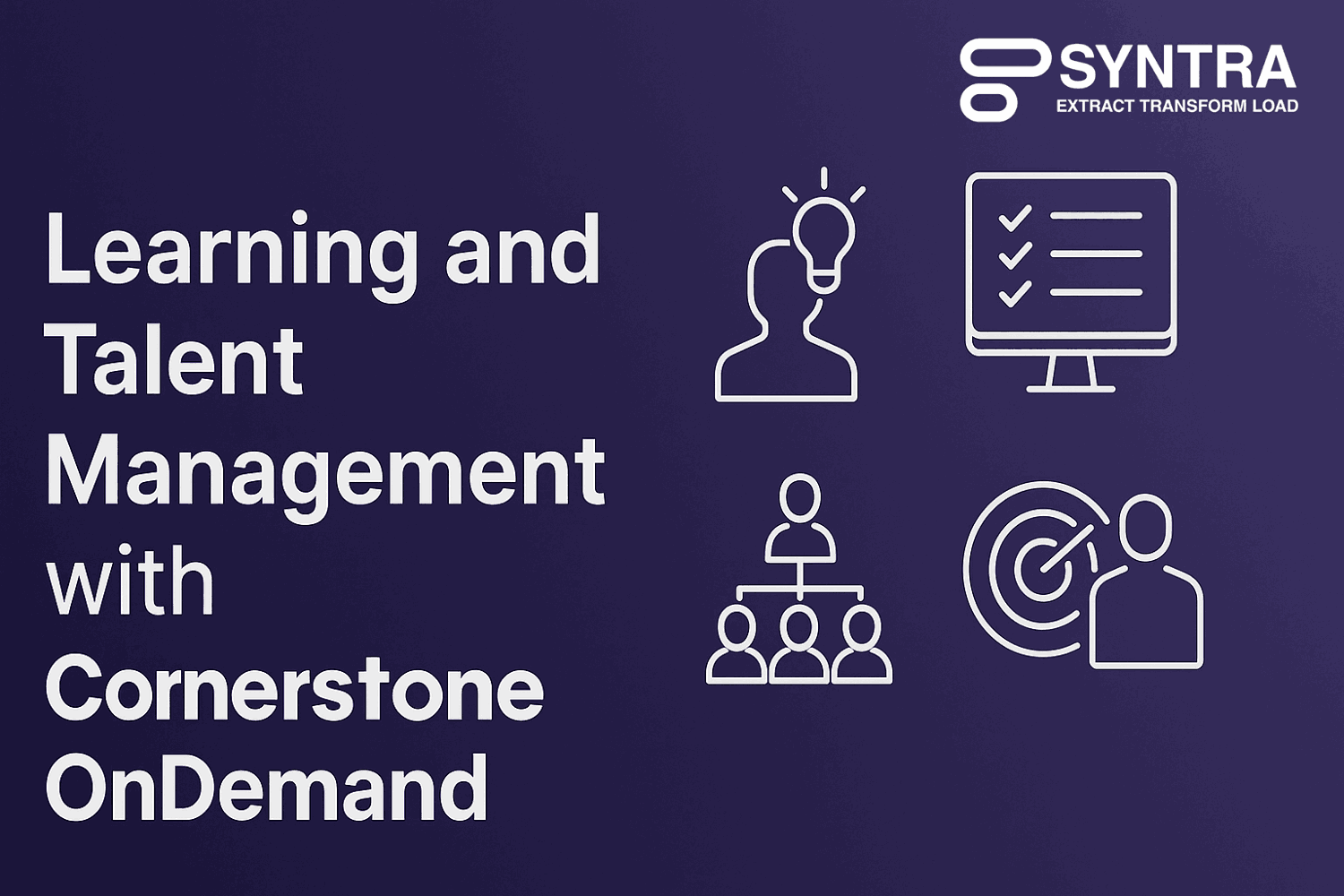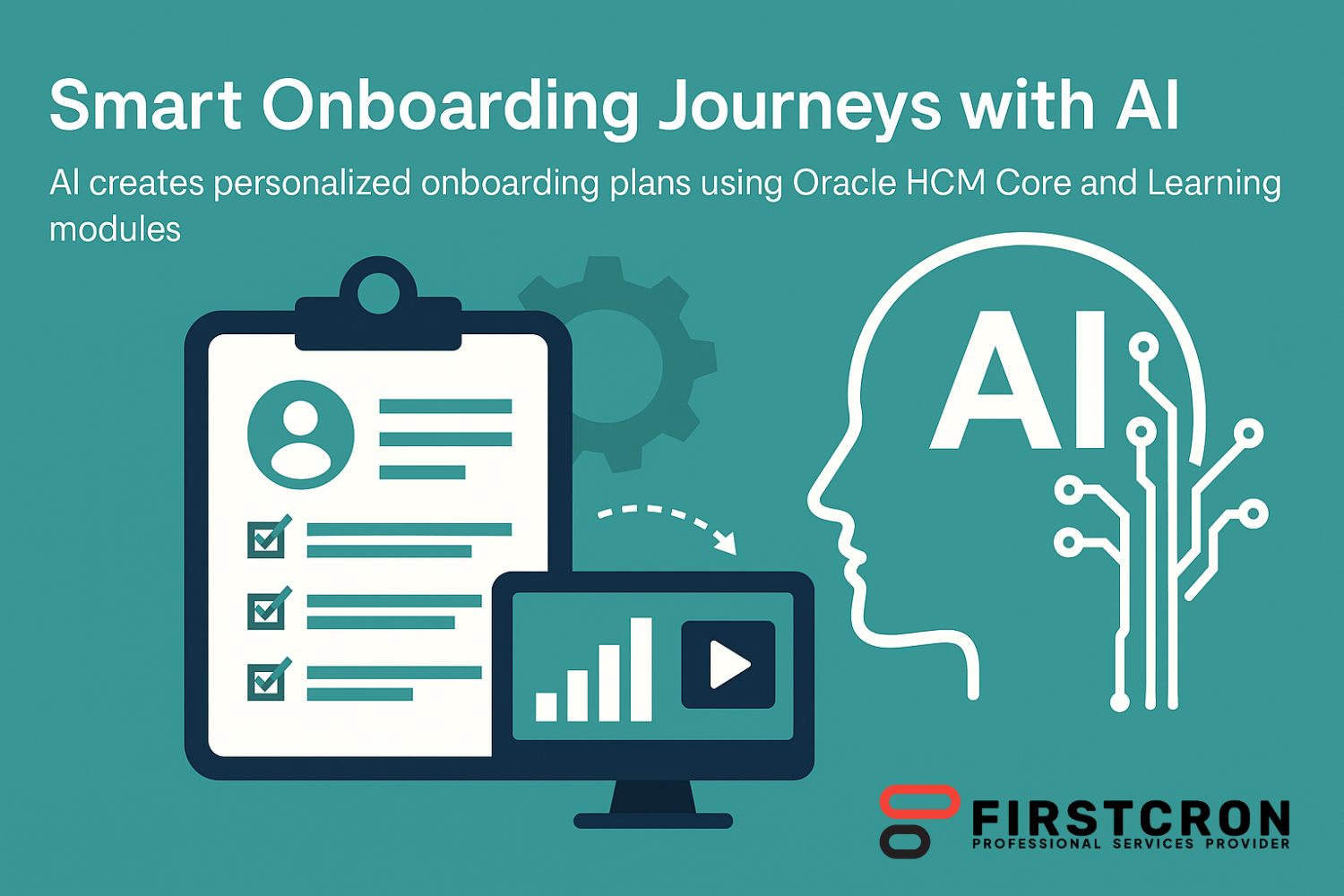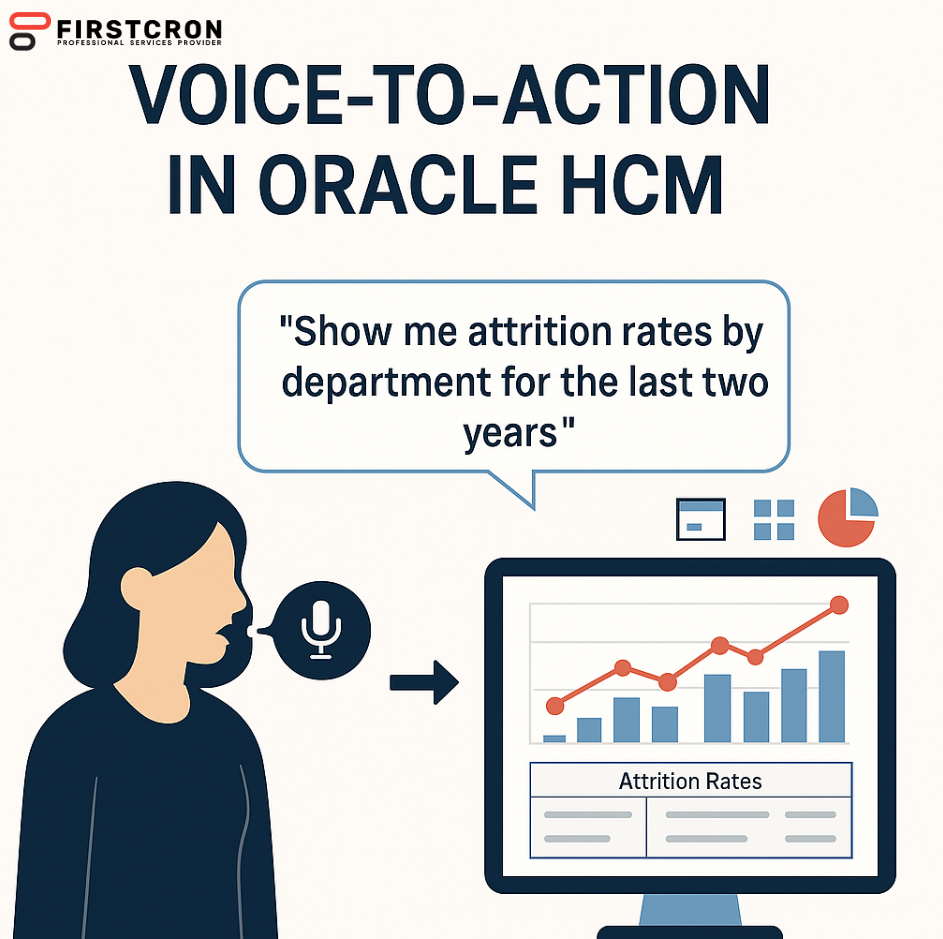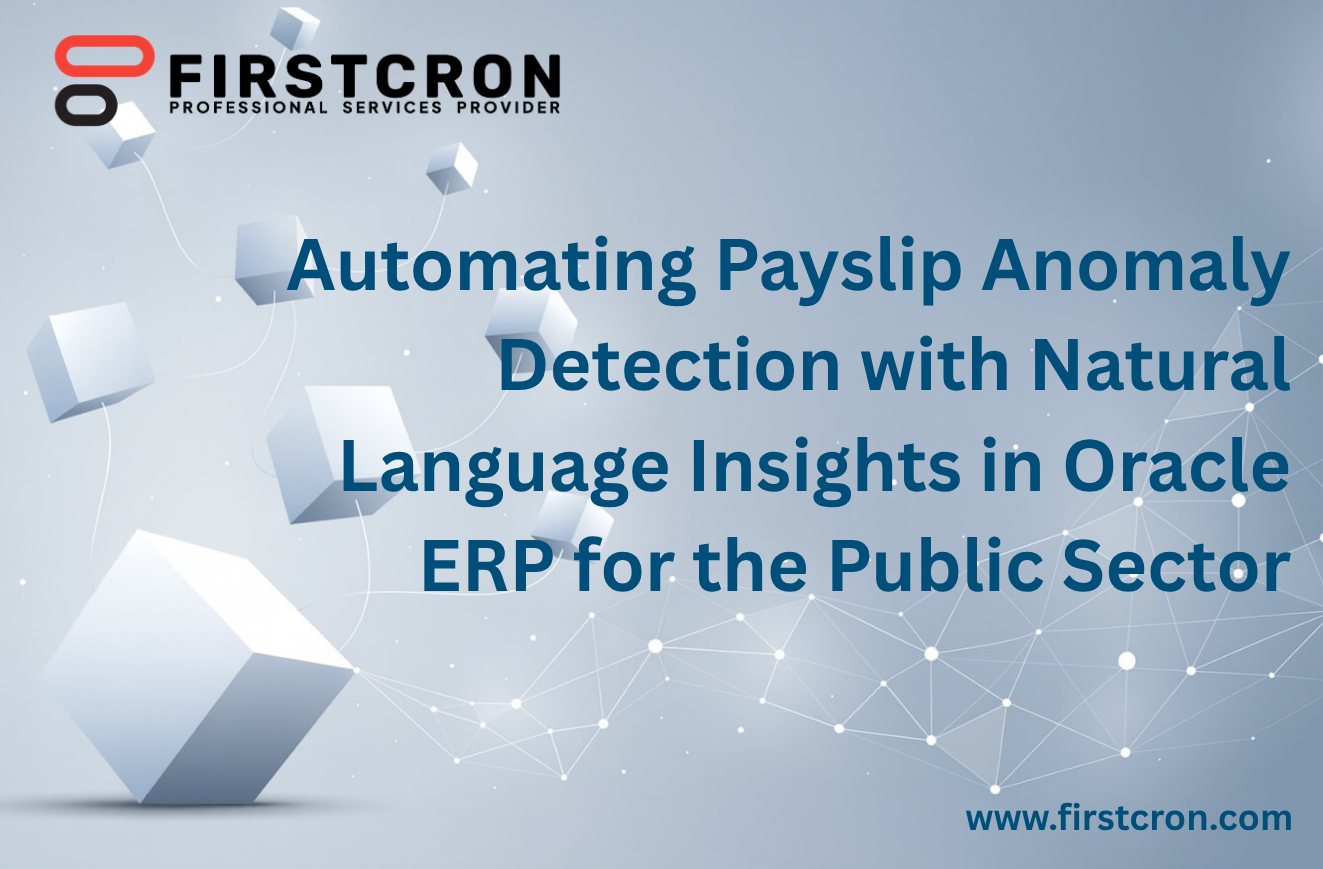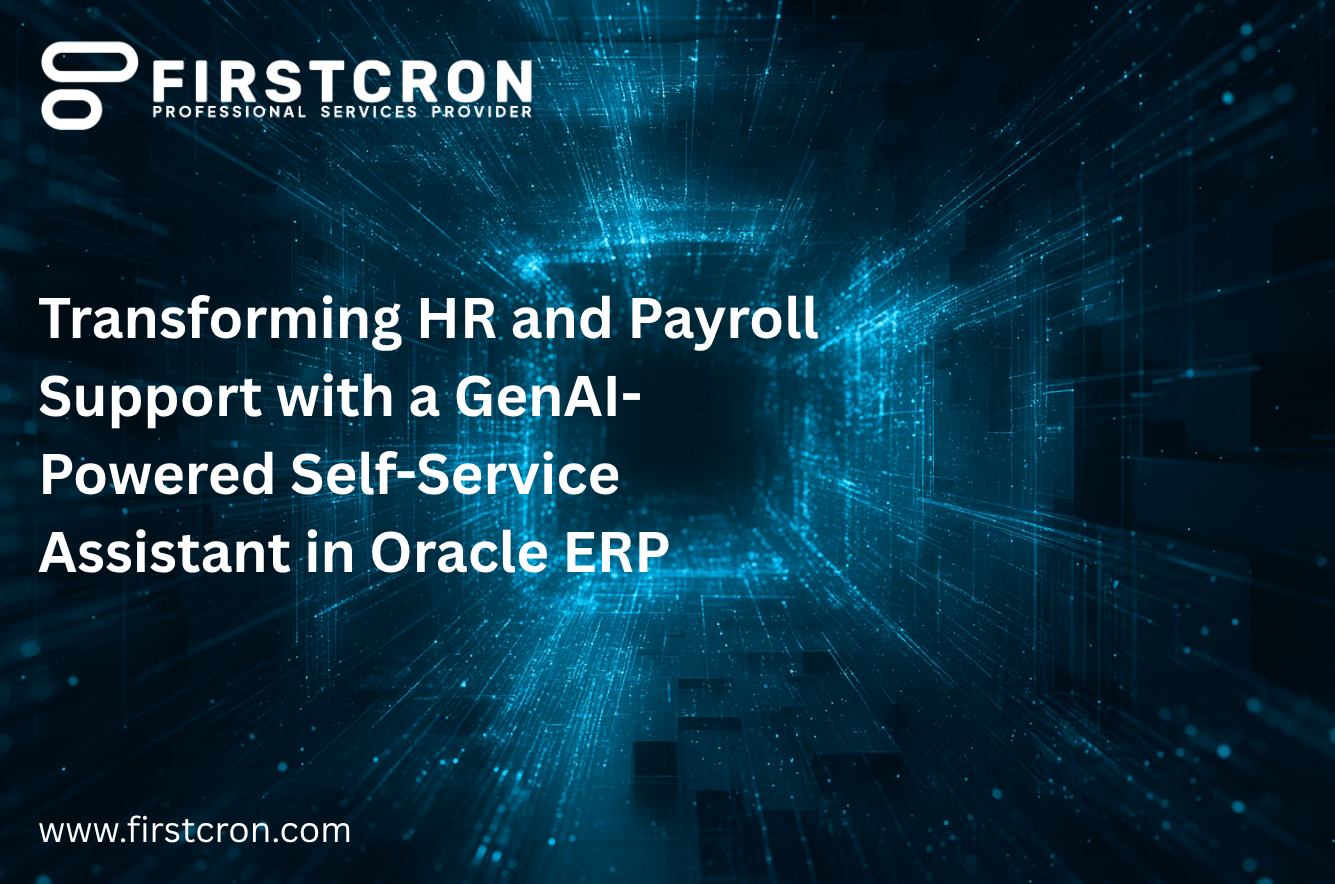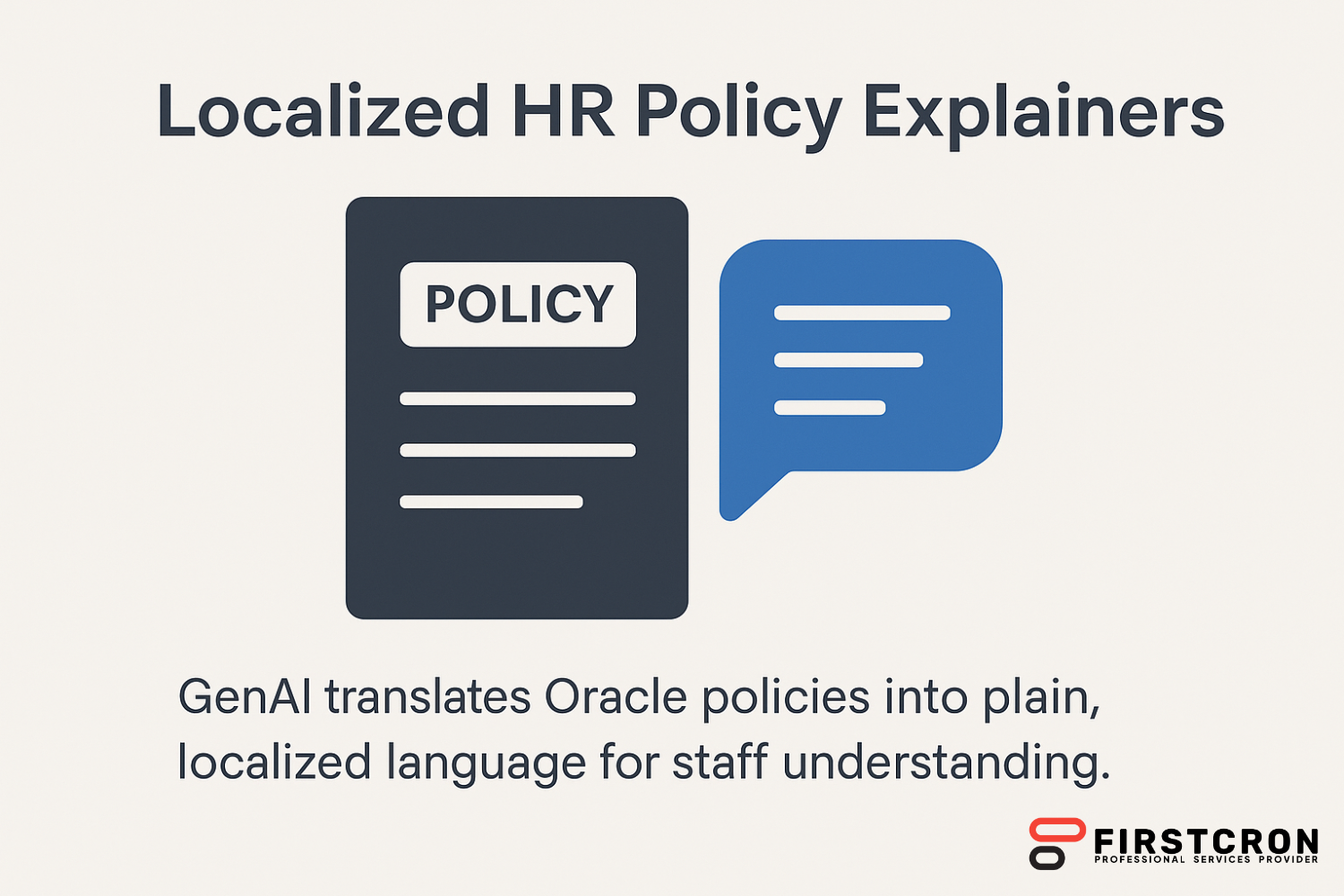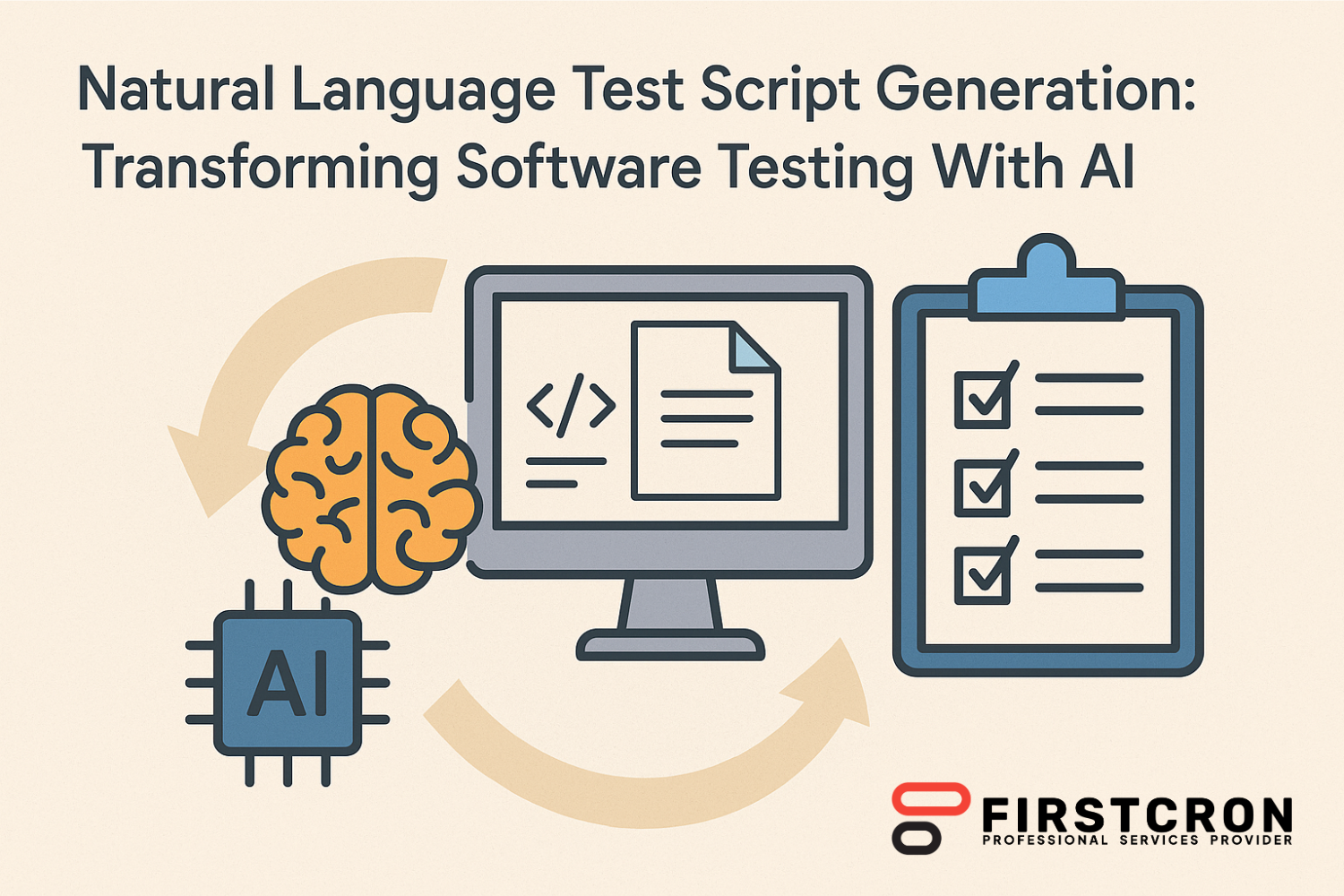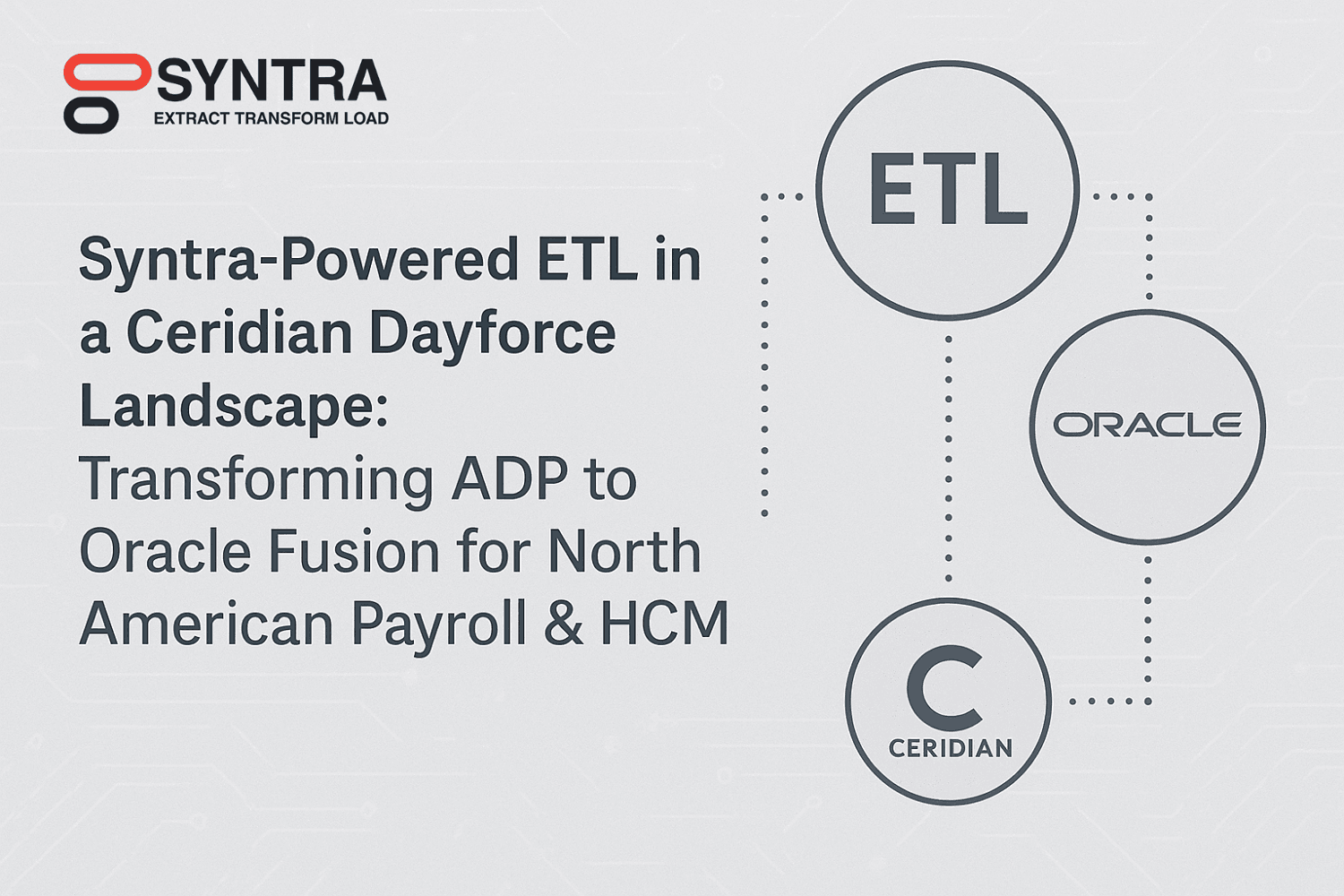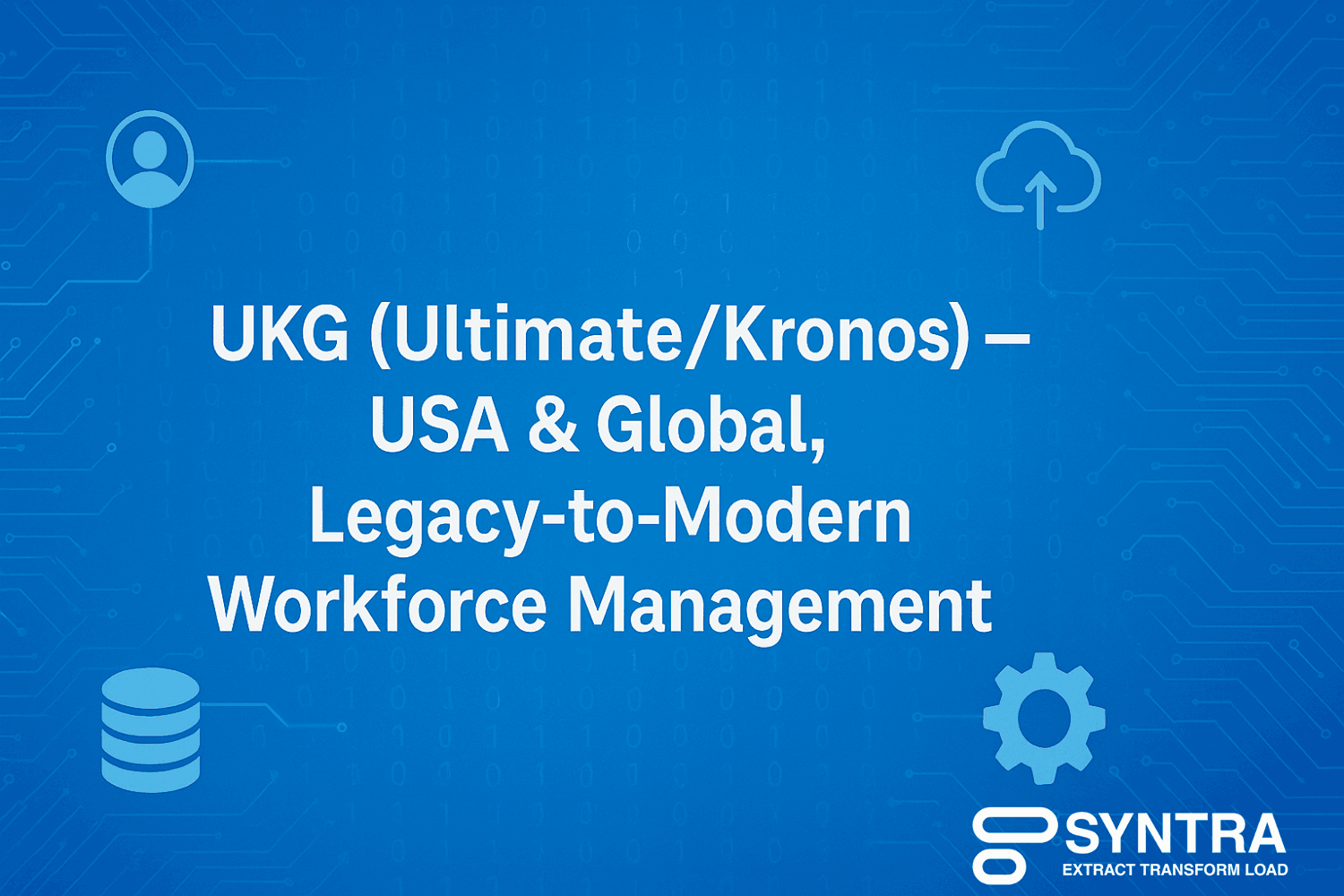
Large UKG programs—spanning the U.S. and multi-country operations—often sit at the intersection of workforce management (time, scheduling), HR, and payroll. Data must flow cleanly from systems that capture work (UKG) to systems of record (Oracle Fusion) and external payroll engines (often ADP) without breaking compliance or costing hours of manual reconciliation. Oracle provides supported integration paths to ADP, including Payroll Connect and HCM Extracts for real-time and batch flows, but customers still need orchestration, mapping, and quality controls to make those rails production-grade across regions and legacy footprints.Syntra (from FirstCron) focuses on that orchestration layer: extracting core HR and payroll-adjacent objects, transforming them to Oracle Fusion’s canonical definitions, and loading them into target modules or to ADP endpoints—automating what is usually weeks of hand-built scripts. FirstCron positions itself as an enterprise advisory and delivery partner around Oracle Cloud, which provides the context in which Syntra operates.
In this blog we’ll cover
- The UKG Landscape You’re Integrating
- Extract: Getting Data Out Cleanly (UKG To Syntra To ADP/Oracle)
- Transform: The Heavy-lift Objects That Save The Most Time
- Load: Making It Stick (Oracle Fusion And ADP)
- The “legacy + Modern” Twist
- Three Common Object Mappings And The Clock Time They Save
- Governance, Controls, And Observability
- Governance, Controls, And Observability
- Implementation Notes Specific To USA Vs. Global
- One Practical Rollout Pattern
- Conclusion
The UKG Landscape You’re Integrating
UKG (born from the Ultimate Software + Kronos merger) is a global HCM and workforce management provider. Organizations commonly run UKG for timekeeping/scheduling alongside ADP payroll and Oracle Fusion HCM/ERP. UKG’s portfolio (e.g., UKG Pro and UKG Pro Workforce Management, formerly Dimensions) emphasizes global scheduling, time and attendance, and compliance—making it a frequent upstream data source for payroll and HR master data flows.
For U.S. programs, the integration pressure centers on taxability, garnishments, and union/CBAs; globally, it expands to country-specific calendars, allowances, costing, and localization. The more heterogeneous your legacy plus modern footprint, the more your ETL engine must normalize. UKG highlights global workforce needs and compliance as core value propositions—precisely the domains where clean ETL reduces cycle time and risk.
Extract: Getting Data Out Cleanly (UKG To Syntra To ADP/Oracle)
Syntra’s extract layer taps authoritative sources for person, job, and time data, while honoring delta logic (effective dating and “since last run”). On the payroll side, Oracle’s supported patterns include real-time pushes for hire/maintain and batch HCM Extracts for bulk payroll artifacts—your ETL should align to these modes to avoid rework. For ADP, Oracle provides guided setup for Workforce Now and Global Payroll interfaces; Syntra aligns its extraction cadence to those patterns (e.g., new-hire real-time vs. pay-period batch).
Practically, Extract must normalize multi-region feeds: U.S. legal entities with weekly/biweekly calendars versus EMEA/APAC entities with monthly cycles; different time zones; local holiday schedules; and site-specific shift premiums. Those differences shape the Transform step.
Transform: The Heavy-lift Objects That Save The Most Time
The biggest time savings come from prebuilt transformations for high-complexity, high-volume objects where UKG/ADP semantics differ from Oracle Fusion’s canonical model. Below are the archetypes where Syntra’s mappings and rules engines reduce manual cleanup and payroll exceptions:
- Balances and YTD: Loading opening balances for go-live cutovers and reconciling quarter-to-date/year-to-date to prevent tax and benefit discrepancies.
- Costing and GL: Mapping departments, cost centers, project segments, and local ledger nuances into Oracle’s accounting flexfields; preparing ADP GL interface files for downstream posting to Oracle Fusion Cloud.
- Earnings and Deductions: Translating UKG pay codes to Oracle elements and ADP earnings codes; ensuring taxability flags, pretax/post-tax deductions, and union rates align; bundling retro adjustments cleanly for the next payroll cycle
- Time and Labor: Converting UKG time pairs/punches and schedule exceptions to Oracle time cards or payroll time elements; applying rounding, grace, meal-break, and shift-differential rules consistently in U.S. and non-U.S. contexts.
- Person and Employment: Effective-dated merges of person, assignment, work location, and legal entity; mapping legacy IDs to Oracle person numbers; resolving “rehire vs. transfer” logic.
These transformations are where “templates” beat hand-crafted logic. In U.S. deployments, pretax benefits and garnishments drive most corrections; globally, allowances, expatriate packages, and statutory files dominate. Syntra’s approach is to capture those patterns as reusable rules so each entity inherits quality by default rather than by spreadsheet.
Load: Making It Stick (Oracle Fusion And ADP)
On the load side, Syntra targets Oracle Fusion loaders (e.g., HDL) and HCM Extract-driven handoffs to ADP. Oracle’s Payroll Connect and outbound interfaces prescribe file structures and delivery options (including JSON for some ADP endpoints); aligning to those specifications prevents brittle custom code and eases support handoff. For ADP Workforce Now and ADP Global Payroll, Oracle’s playbooks outline the prerequisite objects—elements, balances, fast formulas, and object groups—that must pre-exist for a successful load. Syntra sequences those dependencies during environment promotion.
The “legacy + Modern” Twist
Most programs don’t start greenfield. You’ll inherit Kronos/Ultimate configurations, local payroll idiosyncrasies, and half-documented pay codes. UKG’s evolution (Ultimate + Kronos) and renames (e.g., UKG Pro Workforce Management, formerly Dimensions) complicate reference data. A disciplined ETL treats those as migration inputs: catalog pay codes, time rules, and earning/deduction equivalences; then map them to Oracle elements and ADP codes once—so you don’t repeat the exercise every sprint. UKG’s own materials emphasize global, industry-specific workforce needs; Syntra makes the operational bridge to Oracle/ADP by codifying those mappings
Three Common Object Mappings And The Clock Time They Save
| Object (Source To Target) | Key Transformation Highlights | Typical Effort Saved Per Cycle |
|---|---|---|
| UKG Pay Codes to Oracle Elements and ADP Earnings Codes | Normalize naming; apply taxability; link to balances; bundle retros; enforce union/CBAs | 6–10 analyst hours per entity |
| UKG Time Punches/Schedules to Oracle Time Cards / Payroll Time Items | Convert pairs to duration; apply rounding/grace; compute shift diffs; reconcile exceptions | 8–12 analyst hours per pay period |
| ADP GL Output to Oracle Fusion GL | Segment mapping; multi-ledger currency handling; period close validations | 4–6 analyst hours per entity |
Illustrative ranges from typical enterprise programs; your mileage will vary with entity count and change velocity.
Governance, Controls, And Observability
An ETL without observability becomes a ticket machine. Align Syntra’s controls to Oracle/ADP checkpoints: new-hire real-time event status, batch extract run results, and GL load validations. Oracle’s connect and interface frameworks expose status pages and delivery logs; Syntra should surface these as dashboards with drill-through to failing rows. In U.S. contexts, add audit views around tax location, SUI, and reciprocity; globally, around statutory calendars and allowance eligibility.
Governance, Controls, And Observability
An ETL without observability becomes a ticket machine. Align Syntra’s controls to Oracle/ADP checkpoints: new-hire real-time event status, batch extract run results, and GL load validations. Oracle’s connect and interface frameworks expose status pages and delivery logs; Syntra should surface these as dashboards with drill-through to failing rows. In U.S. contexts, add audit views around tax location, SUI, and reciprocity; globally, around statutory calendars and allowance eligibility.
Implementation Notes Specific To USA Vs. Global
- USA: Prioritize deductions/taxability correctness, garnishments, multi-state mobility, and union differentials. Align pay groups and calendars early so time buckets reconcile. Oracle’s Workforce Now interface guidance lists the prerequisite HR/Payroll objects and sequencing.
- Global: Expect country-specific allowances, work-rule calendars, and statutory reporting formats. Oracle’s ADP Global Payroll connect architecture supports real-time hires plus batch maintenance via HCM Extracts; Syntra can route updates accordingly and stamp timezone/locale to keep effective dates sane.
One Practical Rollout Pattern
- Wire Syntra to produce Oracle-ready HDL and ADP-ready payloads that match Oracle’s published interface formats, then automate environment promotion.
- Stand up a golden mapping of person, job, pay code, deduction, and cost segments across “pilot” entities (e.g., U.S. HQ + one EMEA country).
- Use delta smoke tests (new-hire, transfer, unpaid leave, retro time) as your regression pack; track defects to a single mapping catalog rather than per-integration code branch.
Conclusion
In summary, integrating UKG with ADP and Oracle Fusion through a purpose-built ETL solution like Syntra gives organizations a practical path to modernize without losing the value of legacy configurations. By automating the extraction of HR, payroll, and time data, transforming high-complexity objects like pay codes, time punches, and costing structures, and loading them into clean Oracle-ready and ADP-compliant formats, Syntra reduces manual effort, speeds up payroll cycles, and minimizes risk. For USA and global operations alike, this approach supports both legacy and modern UKG environments, creating a unified workforce management data flow that scales efficiently across regions, entities, and evolving compliance requirements.
Tags
Related Post
Navigating Oracle Fusion HCM & Payroll Patch 25C: Key Issues And Solutions For UK Local Councils
July 26th, 2025 10 min read
7 Reasons Why Companies Are Moving From Taleo To Oracle Recruiting Cloud
June 2nd, 2025 14 min read
7 Proven Oracle Fusion Testing Principles To Guarantee Defect-Free Cloud Deployments
May 16th, 2025 15 min read
Navigating Oracle Fusion HCM & Payroll Patch 25A: Key Considerations For UK Local Councils
July 27th, 2025 10 min read
Driving Compliance And Security With Smart Testing In Oracle Fusion
June 5th, 2025 9 min read
WEEKEND READS
Learning And Talent Management With Cornerstone OnDemand
October 10th, 2025 17 min read
Smart Onboarding Journeys With AI: Personalized Employee Integration Through Oracle HCM Core And Learning
September 13th, 2025 21 min read
Voice-to-Action In Oracle HCM: Transforming HR Queries Into Intelligent Actions With GenAI
September 5th, 2025 23 min read
Automating Payslip Anomaly Detection With Natural Language Insights In Oracle ERP For The Public Sector
August 27th, 2025 24 min read
Transforming HR And Payroll Support With A GenAI-Powered Self-Service Assistant In Oracle ERP
August 26th, 2025 21 min read
Localized HR Policy Explainers: How GenAI Translates Oracle Policies Into Plain Language
September 12th, 2025 15 min read
Transforming HR Efficiency With Smart Document Generation In Oracle ERP
August 30th, 2025 17 min read
Natural Language Test Script Generation: Transforming Software Testing With AI
September 11th, 2025 24 min read
Syntra-Powered ETL In A Ceridian Dayforce Landscape: Transforming ADP To Oracle Fusion For North American Payroll & HCM
October 4th, 2025 20 min read
Kicking Off A 5TB Archival Journey — From Legacy Systems To Smart Storage
August 8th, 2025 3 min read







